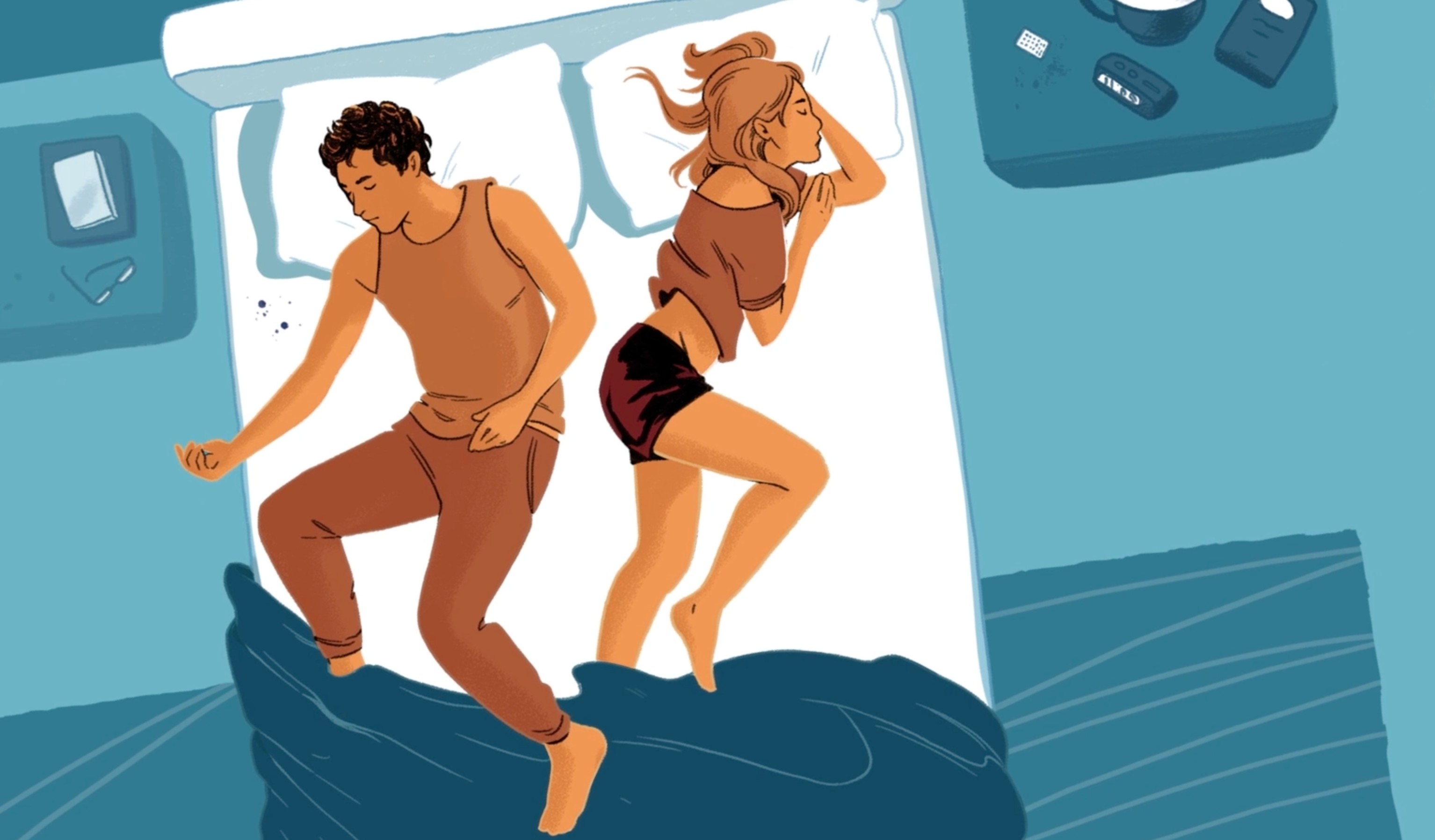Left Image: (Photo by Wodicka/ullstein bild via Getty Images). Right Image: (Photo by Jb Reed/Bloomberg via Getty Images).
"I try to get off them but can’t seem to do it, no matter how slowly I wean myself.""I am having withdrawal symptoms of shaking, panic attacks, flulike symptoms, nausea, fatigue, night sweats, tingling and numbness in the arms and legs.""I was awake for about two days in hell, this hell consisted of this just intense feeling of fear combined with a belief that this state was a permanent condition.""Noises jarred every fibre in my body and my eyes seemed to shun the light of day. I shook from head to foot and enormous panic attacks would sweep through my body, leaving me exhausted and totally afraid. Complete fatigue took over the feeling of tiredness and sleep no longer came with the night. Many times I thought it would be best to die."

Given the opioid crisis raging in America right now, you could be forgiven for thinking these are stories of addiction. They’re not. Instead, they are accounts of people struggling to stop taking antidepressants or anti-anxiety medications. And they show that we're not going to be able to provide effective help for them—or for people with genuine addictions—until we properly understand the real role that withdrawal plays in substance misuse.Essentially, you can have withdrawal without being addicted—and you can have addiction without obvious physical signs of withdrawal. Failing to understand this has confounded the treatment of pain, mental illness and addiction for decades. But when we recognize the differences, better approaches for all of these problems suddenly come into focus.The correct term for the condition of needing a substance in order to function without symptoms is dependence—and dependence, by itself, is not a problem, so long as the benefits of the drug continue to outweigh its risks. That’s why, in many cases, the best treatment for depression, pain and opioid addiction is to stay on stable, appropriate doses of the drugs, not come off them despite the recently-highlighted problem of withdrawal.Unfortunately, the dependence label was made to stand for addiction in all but the most recent edition of the diagnostic manual for psychiatry, the DSM. Charles O’Brien, professor of psychiatry at the University of Pennsylvania, was on the committee that made these decisions. For DSM III-R, which was published in 1987, the committee chose "dependence" as the official diagnostic term because the label of addiction was seen as “pejorative,” he recalled in an interview.O’Brien objected at the time. "I said, ‘Please, it's already taken, it's a pharmacological term—and there are all of these other drugs that are not abused that produce dependence and a withdrawal syndrome… if you insist on using dependence as a severe form of addiction, you're going to confuse people, and that’s exactly what happened," he told me.When he became chair of the DSM-5 committee, O’Brien was determined to end the confusion— and by that point, in 2013, there was widespread agreement that the prior language had been a mistake. The official diagnosis is now "substance use disorder," moderate to severe.But five years later, both the public—and physicians—are still struggling to make the distinction. Among other things, this leads people to wrongly believe they are "addicted" to antidepressants even though they are neither getting high on them nor experiencing a craving for that high. By the same token, many also incorrectly conclude that if a drug addiction does not include severe withdrawal symptoms, it’s no big deal.Cocaine is the classic example here: While coke withdrawal produces extreme craving and irritability, the lack of physical symptoms—like the vomiting and diarrhea seen in opioid withdrawal—led 1980s experts to incorrectly conclude that it was less addictive. The crack epidemic made clear that this perspective was wrong, but many people still view "physical addiction" as more severe than "psychological addiction," when, in fact, the psychology is the key here.This matters in part because many people with opioid addiction describe withdrawal as the worst possible experience, the most agonizing condition imaginable. However, if you look at the histories of people with opioid addiction—mine included—you will rapidly discover that they go through complete withdrawal multiple times.In my case, for example, I never relapsed during the time when I had active withdrawal symptoms. It was only a few weeks or months later, when I felt no physical need for the drugs, that I would decide that I could control my use and just shoot heroin on weekends. Of course, those weekends soon blended into daily use again.If withdrawal were the key obstacle to recovery, one withdrawal experience would be enough to end it. That is, you should be able to cure people of opioid addiction by locking them away from drugs—because of how horrible it was to quit, they would never relapse, the thinking goes. This, obviously, is not what happens: within just one month of entering a detox program, studies have found, some 80 percent of people tend to relapse.So, what really does matter in addiction? The National Institute on Drug Abuse, leaning on the DSM-5 definition, defines it as "compulsive drug seeking and use, despite harmful consequences"—withdrawal symptoms aren’t even required for the diagnosis. The hallmark trait of addiction is compulsion and craving: believing that the drug is essential to making your life work, even when it is clearly doing the opposite. "It's actually craving that matters," O'Brien said.The distinction between addiction and dependence can even be seen in the brain, according to Ruben Baler, health scientist administrator at the National Institute on Drug Abuse. "In the beginning of any addiction, the release of dopamine is triggered by the ventral tegmental area (VTA) in the mid brain, that’s at top of the spine," he said. At this point, the substance itself seems rewarding and pleasurable.As addiction continues, however, the brain learns that certain cues—people, places and things, as the recovery slogan puts it—predict delivery of the drug. Now, these cues actually trigger the dopamine release before the stuff is even consumed, producing craving. And once the drug is obtained, the original dose no longer satisfies and people take more and more. Eventually, using seems necessary just to feel normal.In the brain, these changes are reflected by a shift from dopamine being released primarily from the VTA to its release coming predominantly from a region called the substantia nigra (SN). The output of the circuit changes as well: instead of affecting the ventral (in this instance, physically lower in the brain) area, the SN affects the dorsal (in this instance, upper) part. (You can think of ventral being the underside of an animal while dorsal is its top, like the dorsal fin of a shark.)"That’s where habit formation takes place," Baler said. "So these behaviors, once they are shifted from the ventral striatum to the dorsal, they become intensely learned behaviors and they become automatic and reflexive."With dependence, in contrast, changes occur in different regions. “That transition from ventral to dorsal, it has nothing to do with the pharmacological emergence of the physical dependence on the drug," Baler continued. That’s why, in most cases of dependence, relapse is rare: once people have fully emerged from withdrawal and no longer need the substance to cope with the symptoms they had originally, they have no craving and don’t ever want to repeat withdrawal. With addiction, in contrast, relapse is common because the condition is defined by failure to respond to negative experiences, including withdrawal.This doesn’t mean that dependence isn’t a problem for people who are taking drugs like antidepressants, anti-anxiety medications or opioids but are no longer benefitting from them. In those cases—when the drug genuinely no longer works or has greater risks than benefits—withdrawal can still cause serious suffering.“Part of the problem is that tapers aren’t done gradually enough,” said David Juurlink, professor of medicine and pediatrics at the University of Toronto. He described a patient who had originally been prescribed tramadol for shoulder pain, but found that when he tried to stop taking it after the pain had passed, he couldn’t sleep. "Every time he tried to cut down by just 25 milligrams, he was ruined by insomnia [so] he kept taking it for a year and a half," Juurlink explained.Instead, Juurlink tapered him just five milligrams at a time, which required getting the drug from a special compounding pharmacy. "And now he’s off, and he’s immensely better because he’s not taking the stuff that he was taking—not for analgesia, but because he had been taking it."When we recognize the distinction between addiction and dependence, we can focus on the problems associated with each of them rather than stigmatizing anyone who has withdrawal and any drug that causes it. We can treat people with problematic dependence with greater respect, recognizing that relieving suffering by tapering slowly, voluntarily and gently is important no matter what medical condition someone might have. Just because someone isn't addicted doesn't mean abrupt withdrawal isn't a problem.And we can stop seeing short term inpatient "rehab" or "detoxification programs" (typically, seven to 28 days)—which keep patients isolated for the acute period of withdrawal—as the best treatment for addiction. The real problem here is why someone feels the compulsive need for escape. If you simply take away the drug without resolving that existential dilemma, relapse of some type is pretty much inevitable.Sign up for our newsletter to get the best of VICE delivered to your inbox daily.Follow Maia Szalavitz on Twitter.
Advertisement

Given the opioid crisis raging in America right now, you could be forgiven for thinking these are stories of addiction. They’re not. Instead, they are accounts of people struggling to stop taking antidepressants or anti-anxiety medications. And they show that we're not going to be able to provide effective help for them—or for people with genuine addictions—until we properly understand the real role that withdrawal plays in substance misuse.Essentially, you can have withdrawal without being addicted—and you can have addiction without obvious physical signs of withdrawal. Failing to understand this has confounded the treatment of pain, mental illness and addiction for decades. But when we recognize the differences, better approaches for all of these problems suddenly come into focus.The correct term for the condition of needing a substance in order to function without symptoms is dependence—and dependence, by itself, is not a problem, so long as the benefits of the drug continue to outweigh its risks. That’s why, in many cases, the best treatment for depression, pain and opioid addiction is to stay on stable, appropriate doses of the drugs, not come off them despite the recently-highlighted problem of withdrawal.
Advertisement
Advertisement
Advertisement
Advertisement
Advertisement
